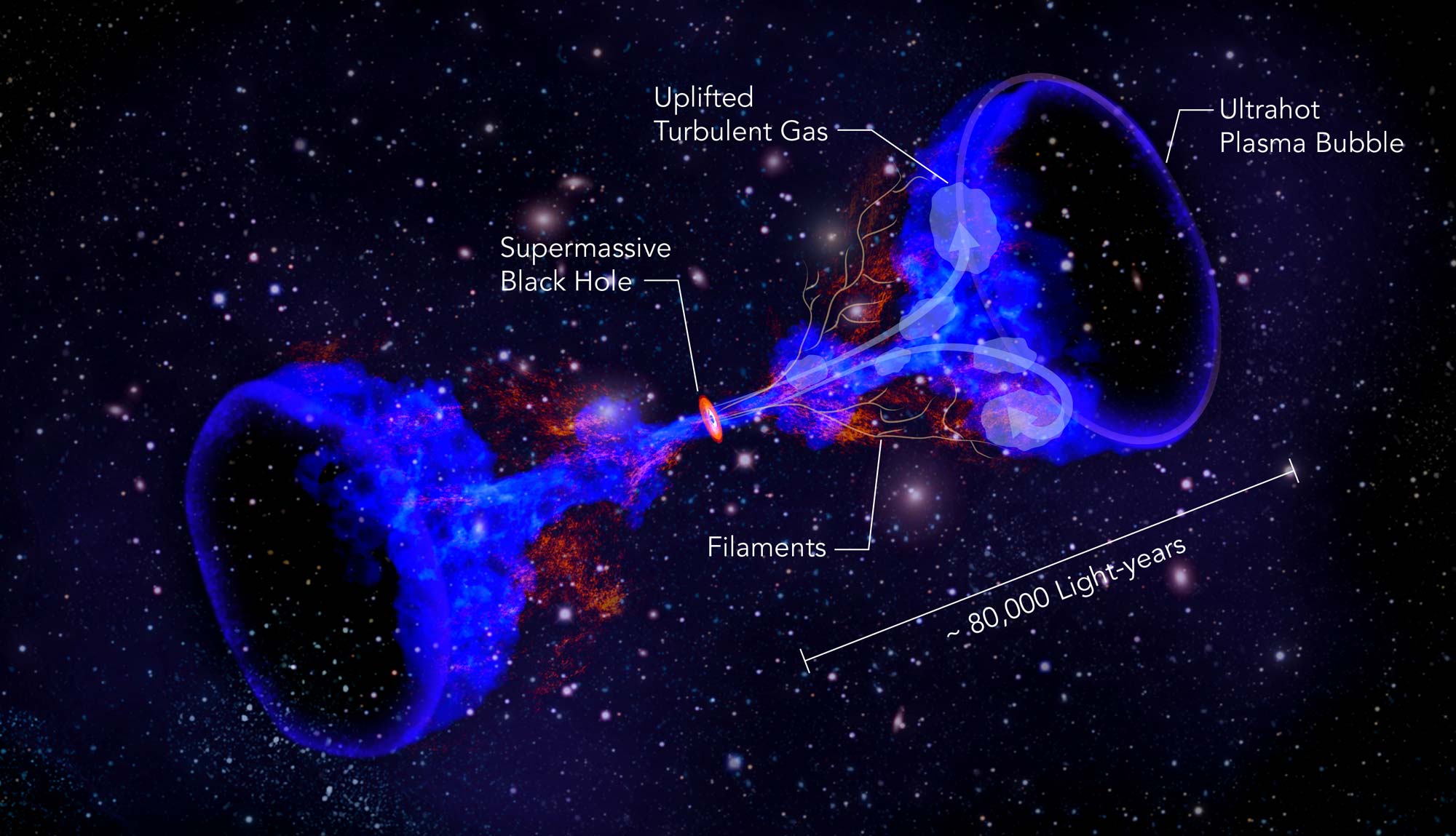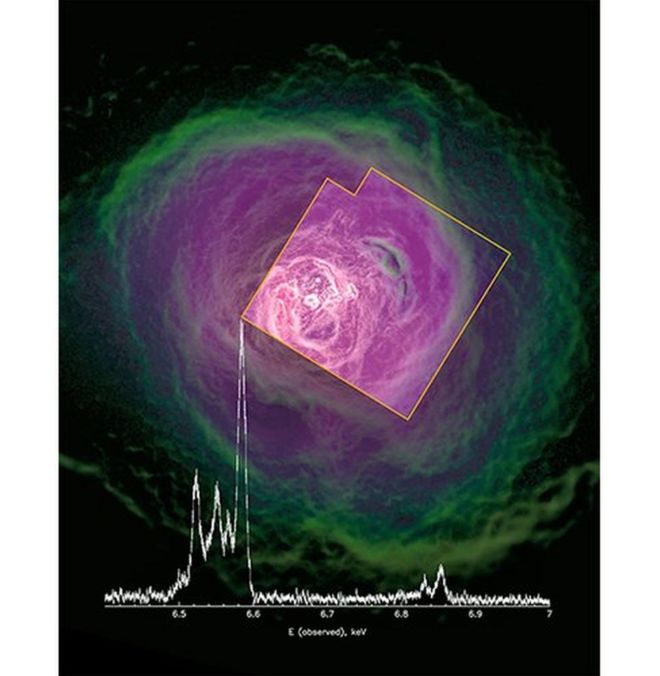Science
Related: About this forumLost Japanese Spacecraft Shares Groundbreaking View of Galaxy Group
Source: Space.com
Lost Japanese Spacecraft Shares Groundbreaking View of Galaxy Group
By Nola Taylor Redd, Space.com Contributor | July 6, 2016 02:10pm ET
Like a confectioner trying to reach the right consistency in a sweet concoction, a supermassive black hole is vigorously stirring the gas within a collection of galaxies to keep star formation at a minimum. The new finding, revealed by the doomed spacecraft Hitomi, may help solve the question of why so few stars form within collections of hundreds or thousands of galaxies.
[font size=1]-snip-[/font] Hitomi measured the motion of gas in the center of the the Perseus galaxy cluster with unprecedented precision, as much as 50 times better than previous instruments, said Andrew Fabian, a professor of astronomy at the University of Cambridge in England. The black hole, by stirring the gas, keeps the material from cooling down and forming new stars.
Without that mixing activity from the black hole, "the central galaxy would be much brighter and have a much higher stellar mass," Fabian told Space.com by email. Fabian is chairperson of part of Hitomi's science working group, an international collaboration headed by the Japan Aerospace Exploration Agency (JAXA). That group published the results of the only science completed by the HItomi spacecraft before it disintegrated in orbit last April.
"We already knew that supermassive black holes, which are found at the center of all galaxy clusters and are tens of billions of times more massive than the sun, could play a major role in keeping the gas from cooling by somehow injecting energy into it," Norbert Werner, a research associate at Stanford University in California who analyzed data from Hitomi, said in a statement. "Now we understand this mechanism better and see that there is just the right amount of stirring motion to produce enough heat."
[font size=1]-snip-[/font]
Read more: http://www.space.com/33358-hitomi-spacecraft-observes-galaxy-stirring.html
Related: The quiescent intracluster medium in the core of the Perseus cluster (Nature)

Eugene
(61,872 posts)Source: BBC
The final image sent by doomed Japanese Hitomi satellite
7 July 2016 Asia
A doomed Japanese satellite managed to capture a view of a galaxy cluster 250 million light years away just before it died, scientists have revealed.
Launched in February, the Hitomi X-ray satellite began tumbling out of control in March and contact was finally lost.
Just before its demise, scientists managed to extract data measuring X-ray activity in the Perseus galaxy cluster.
Published in Nature, data revealed the movement of gas between galaxy clusters was not as turbulent as expected.
[font size=1]-snip-[/font]
Read more: http://www.bbc.com/news/world-asia-36732336
Related: The quiescent intracluster medium in the core of the Perseus cluster (Nature)

[font size=1]Image of the Perseus cluster taken by NASA's Chandra X-ray satellite, overlaid with data taken by Hitomi, outlined by an orange box, showing X-rays emitted by iron and nickel in hot gas between the galaxies[/font]